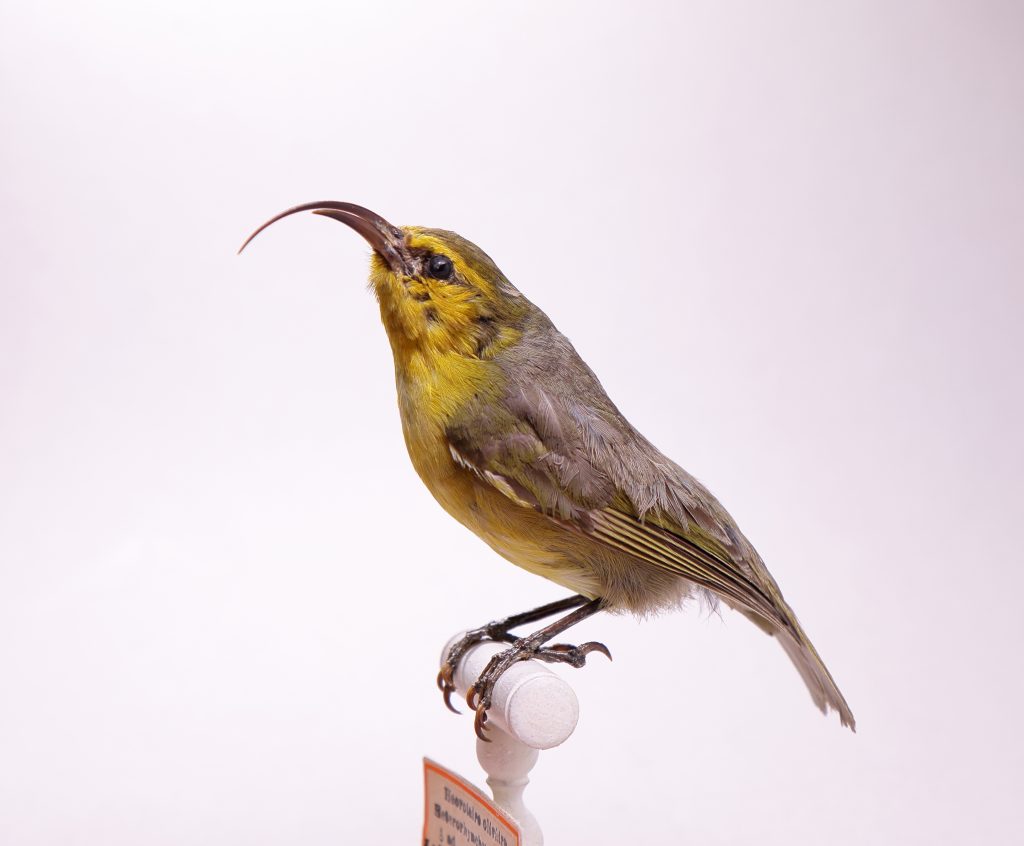Oʻahu Nukupuʻu

Names
- Common Name: Oʻahu nukupuʻu
- Scientific: Hemignathus lucidus
Song
No available recording.
Conservation Status
Extinct. Last seen in the wild between 1838 and 1841.
Species Information
The Oʻahu nukupuʻu was a small Hawaiian honeycreeper. They were recognized by their long decurved bill, green head, and a stripe along their eyebrow (Banko 1984). This unique downward-curving bill began a trend of classifying birds by describing these decurved bills as “heterobills” (Olson 1994). These bills were adapted to acquire nutrients through the flowers of plants such as ʻōhiʻa. This forest bird that once flew in abundance became extinct between 1838 and 1841.
Distribution
Oʻahu
Habitat
Wet ‘ōhia forests of Oʻahu. Perkins (1903, in Pyle & Pyle 2017) noted that the birds may have lived in lower elevation forests on Oʻahu.
Threats
The exact cause of extinction is uncertain. However, Oʻahu nukupuʻu likely were susceptible to the same factors that threaten other native Hawaiian forest birds including loss and degradation of habitat, predation by introduced mammals, and disease.
Additional Resources
Pyle, R.L., and P. Pyle. 2017. The Birds of the Hawaiian Islands: Occurrence, History, Distribution, and Status. B.P. Bishop Museum, Honolulu, HI, U.S.A. Version 2 (1 January 2017) http://hbs.bishopmuseum.org/birds/rlp-monograph
Banko, W. E. (1984). History of Endemic Hawaiian Birds: Forest Birds: ʻAkialoa, Nukupuʻu &
ʻAkiapōlāʻau. Population histories–species accounts (Vol. 9). Cooperative National Park Resources Studies Unit, University of Hawaii at Manoa.
Olson, S. L., & James, H. F. (1994). A specimen of Nuku pu’u (Aves: Drepanidini: Hemignathus lucidus) from the island of Hawai’i. Pacific Science.



